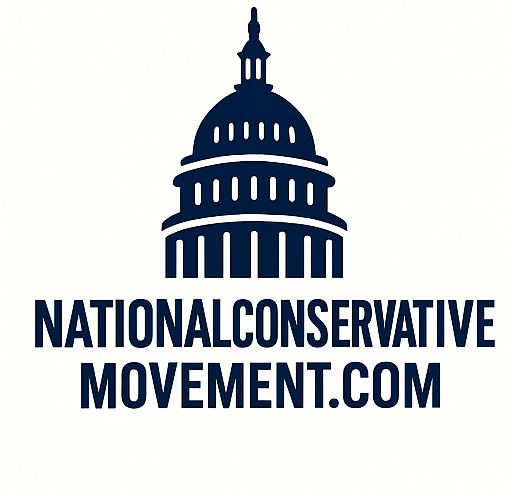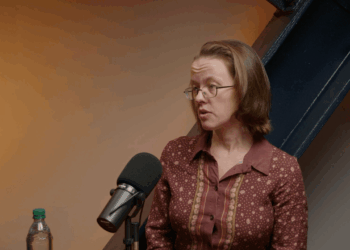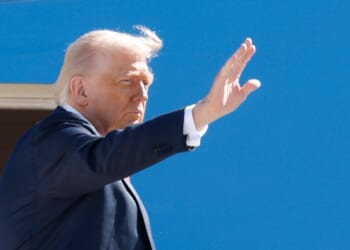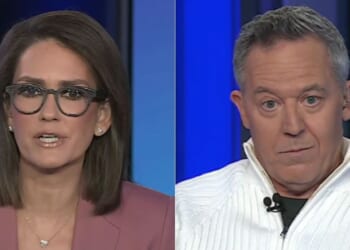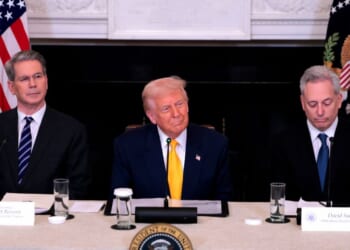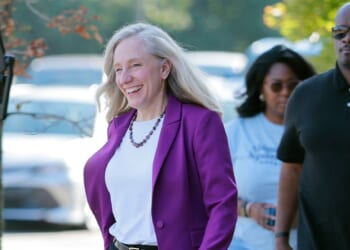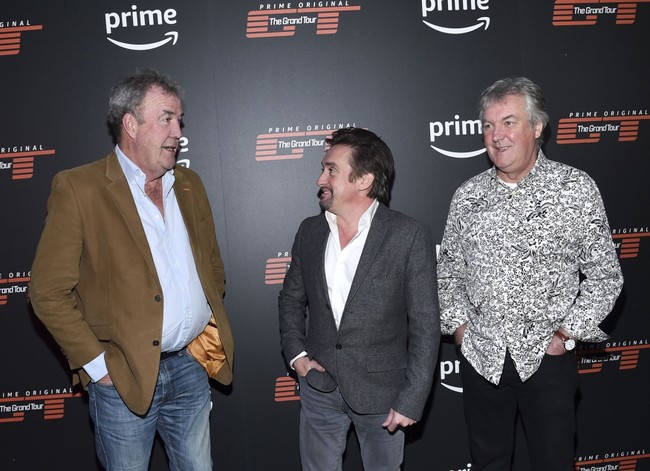
Meeting first as teenagers at Repton School in Derbyshire in the mid-‘70s, Andy Wilman has been Jeremy Clarkson’s behind the scenes partner in crime for much of their adult life. Wilman has been the producer of most of his TV series, including most recently, Clarkson’s Farm. His new book, Mr. Wilman’s Motoring Adventure: Top Gear, Grand Tour and Twenty Years of Magic and Mayhem, hilariously describes those misadventures, and how Clarkson, Richard Hammond, James May, and Wilman, somehow transformed a Sunday night British show for car obsessives into one of the world’s most-watched TV shows.
I must confess that at the peak of their viewership, I was not contributing to those numbers. I never watched Top Gear during its run from 2002 to 2014. I would see it on the DirecTV onscreen guide as appearing on BBC America, but knowing it was a BBC production led me to believe that it would be a dry magazine-format show with reviews of Aston Martins and (pre-woke) Jags, along with a big heaping helping of environmentalism and, thus lots of Toyota Priuses and similar hybrids and electric cars.
Reinventing (the Show About) the Wheel
Other than the environmentalism, what I was envisioning was “Old” Top Gear, the stodgy magazine-format half-hour show which ran on BBC2 from 1977 until 2001. But as Wilman writes in his new book, he and Jeremy Clarkson did for the car program what David Letterman and his staff did to the late-night talk show format in the 1980s — reinvent an outdated format and completely subvert it for a younger, rowdier audience. Regarding the original format of the show, Wilman writes:
The real problem was the show itself. There was now a new wave of Factual Entertainment programmes filling the airwaves, such as Changing Rooms and Ground Force, where all the presenters went about their business in a completely relaxed manner, chatting to each other as if the cameras weren’t there. Then alongside those you had Jamie Oliver whizzing about on his scooter in Hoxton, glugging olive oil over everything and making cheeky quips to the producer off screen. Next to these newcomers the decades-old format of Top Gear – with its presenters all alone, all doggedly presenting long pieces to camera full of consumer advice – looked like it belonged in the Bayeux Tapestry.
In contrast, Wilman writes that almost immediately after old Top Gear was cancelled, Clarkson began dreaming up a much snappier, edgier car show:
Instead of five disparate items presented by five separate people, the new show would be anchored from ‘a place’. Maybe an aircraft hangar rather than a conventional studio, with three presenters all together in the hangar at the same time, actually talking to each other.
Outside, he continued, there could be a race track where the fast cars could be tested at full red-meat speeds. There’d be no more driving along in a Ferrari at 59 mph on a 60 mph road, shouting: ‘and once unleashed, the speed will rip your eyes out …’ then accelerating to 61.
* * * * * * * *
‘Guests!’ he proclaimed next. ‘We’ll have guests, and … we’ll get a shitty car and they’ll have to set a lap time round the track.’
‘What, like Bryan Ferry in a Hyundai?’ ‘Exactly!’ ‘Ah,’ I then countered, ‘what if the guest refuses to do the lap?’ ‘Well they don’t come on the show,’ he replied firmly. ‘Jesus, that’s gonna reduce the pool somewhat,’ replied this pragmatic producer. ‘If we give in once, we’re bollocksed; word will get round,’ he shot back. ‘Celebs take the piss whenever they can unless you hold firm.’ He must know, I thought, what with being one.
He then moved onto his next idea: a news section where, in front of the studio audience he and the other presenters – TBD – would discuss the new cars that had gone on sale. ‘This will be properly useful. The new Volkswagen Golf is launched, we all know it’s a very important car, one of the biggest sellers in the country, but boring as shit to film. Why bother making a seven-minute piece on it when we can just say in our news section:
“There’s a new Golf on sale, we’ve driven it, it’s excellent, it costs this much, buy it if you want one.” Bish bash bosh. Then we can save our films for cars that are more interesting and quirky.’
That show would go from a viewership of three million Brits to a global audience of 350 million or so when Clarkson’s era concluded in 2015.
Top Gear Uses Up Its Nine Lives
It was only when I read Charles C.W. Cooke’s 2015 article at National Review titled, “The Anti-Scold” that I thought, I really must become one of those viewers myself. Cooke described Clarkson as being what happens “when a nation’s cultural elites set out to forge an environment in which nobody is allowed to say anything remotely risqué without drawing condemnatory looks and an open invitation to apologize. As yin invites yang and positive necessitates negative, political correctness has created Jeremy Clarkson to serve as the anti-scold.”
Sure, Top Gear began life as a serious car show. But for more than a decade now, its worldwide audience has rendered itself witness to something else altogether — namely, a long, slightly adolescent, and always irreverent bachelor party that was organized for, attended by, and celebrated in the name of one man: Jeremy Charles Robert Clarkson. Today that man has fallen from grace — removed from the field of his own jubilee for violent and ungentlemanly conduct. It is time to grow up, perhaps. And also to regret the passing of our youth.
Reading that, combined with Amazon’s incessant advertising of the Grand Tour on their Prime Video app, ensured I would tune-in when I took my then-new iPad to the gym in the spring of 2017 and plonked it atop the treadmill’s control panel. I reluctantly clicked on the first episode of the Grand Tour and was completely dazzled by the show’s 4K cinematography, fast-paced MTV-style editing, Monty Python-esque British humor and that debut episode’s hellzapoppin’ opening, which threw in the kitchen sink, and a fair amount of Jeff Bezo’s cash, to blow home streaming viewers out of their seats:
The Grand Tour on Amazon was born after what the Brits dubbed “Steakgate,” the infamous 2015 incident in which a drunken Clarkson allegedly punched Top Gear associate producer Oisin Tymon because he was unhappy with the quality of food being served to him on a location shoot. This punch-up led to his contract not being renewed by the BBC, necessitating the process of Wilman and the show’s three presenters moving to Amazon, in the then-still early days of streaming.
But as Wilman writes, Steakgate was the last in a series of incidents that despite being Top Gear being a ratings juggernaut for the BBC, led to the BBC’s ozone layer of management to increasingly loathe the series. When Clarkson and Wilman proposed rebooting Top Gear in 2002 with a live audience in a studio to Jane Root, BBC2’s controller from 1999 to 2004, “as soon as Jeremy started talking about the hangar, her face lit up. ‘You mean Top Gear has a home? I love it,’ she, erm, squealed. The rest of the pitch zipped along and we came out of the meeting basically in business.”
However, by 2013, Danny Cohen was the director of BBC Television. A doctrinaire leftist who loathed a TV show filled with smoky-tired Italian supercars, his relationship with Top Gear was quite frosty. Wilman writes that “he and Jeremy, politically and philosophically, were about as far apart as [Labour’s] Jeremy Corbyn and [Brexit architect] Jacob Rees-Mogg.” Despite it being an enormous cash cow for the Beep, Cohen was repeatedly looking for a way to kill the Clarkson, Hammond and May iteration, and Steakgate became the final straw.
Reading Wilman’s take on Top Gear’s painful and protracted demise reminded me why I was initially astonished that such a show could ever make it on the BBC’s airwaves. The state broadcasting network which famously inspired George Orwell to name the torture chamber at the climax of 1984 after one of its offices has been a Petri dish of political correctness for decades.
For those who’ve already read Top Gear/Grand Tour script editor Richard Porter’s 2016 book, And on That Bombshell, at least for the Top Gear portion, Wilman’s new book mines similar territory. (With notable exceptions: Porter wasn’t there at the very beginning of the reboot process, when Clarkson exuberantly told Wilman: “‘I reckon,’ he announced, pulling out various bits of paper full of Beautiful Mind scribbles, ‘that if Jane [Root] says it’s up for grabs, we should take Top Gear back.’ ‘Back? We never had it. We only worked on it.’ ‘Yes yes yes,’ he said impatiently, ‘you know what I mean. Take it, redo it, whatever.’”
Similarly, Porter wasn’t high enough in the show’s power dynamics to know what was going on when the BBC chose not to renew Clarkson’s contract in 2015. Porter also didn’t tag along on the show’s harrowing 2014 trip to Argentina, which ended with the crew fleeing in the middle of the night when they learned that Argentinians were hoping to get the stars’ heads on pikes after a perceived insult regarding the Falklands War.)
From the Beeb to the Bezos
Porter’s book ends with Clarkson’s “Steakgate” debacle and the dissolution of his era of Top Gear. In contrast, Wilman’s autobiography goes on to describe the trio’s tumultuous next phase: signing with Amazon, and creating a show that, as Wilman writes, “would have to have a new name, a new look and … this was the kicker … be as close in spirit to our old show as possible BUT … not so close that the BBC lawyers could shut it down. We had to skim the orbit of Top Gear without a barrister noticing.” Unlike Top Gear, which evolved slowly and organically from what Clarkson liked to call “a poky little motoring show” to a globetrotting behemoth, the Grand Tour would have to begin as a massive production, and maintain that complexity throughout its run. The Grand Tour certainly had its moments, but by and large, it lacked the soul and passion of its predecessor.
Wilman seems to agree; in a recent YouTube interview to promote the book, he said of Top Gear that its “magic” was that “it got under your skin.” The video’s host asked, “Do you think that the new version of that ‘magic’ is actually [Clarkson’s Farm], rather than The Grand Tour?” Wilman immediately replied, “Yes, yes, 100 percent.” Which is why, although his book is titled, Mr. Wilman’s Motoring Adventure, I would have liked to have read some details about shooting and editing Clarkson’s Farm.
Another curious omission is that there’s no mention of the British media whipping themselves into a collective frenzy in late 2022 over one of Clarkson’s most controversial columns:
In the December article, which has been removed from The Sun’s website, Clarkson said he lies awake at night “grinding my teeth and dreaming of the day when she [Meghan] is made to parade naked through the streets of every town in Britain while the crowds chant ‘Shame!’ and throw lumps of excrement at her.”
* * * * * * * *
In the statement, Clarkson said he was referring to a “Game of Thrones” scene in his description of Markle being paraded through the streets, but forgot to mention it in the article. He made the same explanation on Twitter after the article was published: “Oh dear. I’ve rather put my foot in it. In a column I wrote about Meghan, I made a clumsy reference to a scene in Game of Thrones and this has gone down badly with a great many people. I’m horrified to have caused so much hurt and I shall be more careful in future,” he tweeted.
He said he had been “accused of all sorts of things” in the past but “it was very rarely sexism,” and he was angry with himself after the debacle with his column.
“I was mortified and so was everyone else,” his new statement reads. “My phone went mad. Very close friends were furious. Even my own daughter took to Instagram to denounce me.” Clarkson’s daughter, Emily, wrote at the time: “I want to make it very clear that I stand against everything my dad wrote about Meghan Markle.”
There was talk in newspapers such as the London Daily Mail and even America’s media house organ Variety in January of 2023 that “Amazon Likely to Part Ways With Jeremy Clarkson After Final Commissioned Shows Go to Air.” Since Clarkson’s Farm will be debuting a fifth season next year, did any of this happen? Did it hasten the demise of the Grand Tour? Either way, as producer of The Grand Tour and Clarkson’s Farm, Wilman must have some stories to tell of this period, which (at least so far), was the closest Clarkson’s Amazon career came to how his time at the BBC sputtered to its conclusion.
One last minor fault in Mr. Wilman’s (pun intended) auto-biography is that he assumes that most readers would be familiar with the original iteration of Top Gear, which may not be true of many American fans, who began watching the show with the Clarkson-era reboot. At one point, Wilman mentions how the Stig was born. After assembling the Clarkson reboot’s power trio, “that still left the problem of ‘a Tiff’, a driver with unquestionable steering-wheel pedigree who could also talk to a camera. Tiff, back then, was a rare beast.” British viewers know that Wilman is referring to Tiff Needell, the former race car driver who became a popular presenter in the 1990s on “old” Top Gear, but American readers might not get the reference.
Still though, as with Richard Porter’s earlier book, Mr. Wilman’s Motoring Adventure will be a must read for for all Top Gear/Grand Tour fans, both to learn more about how their favorite car show was made, and the man behind the scenes who made its complex components work like a (sorry) well-built engine.
